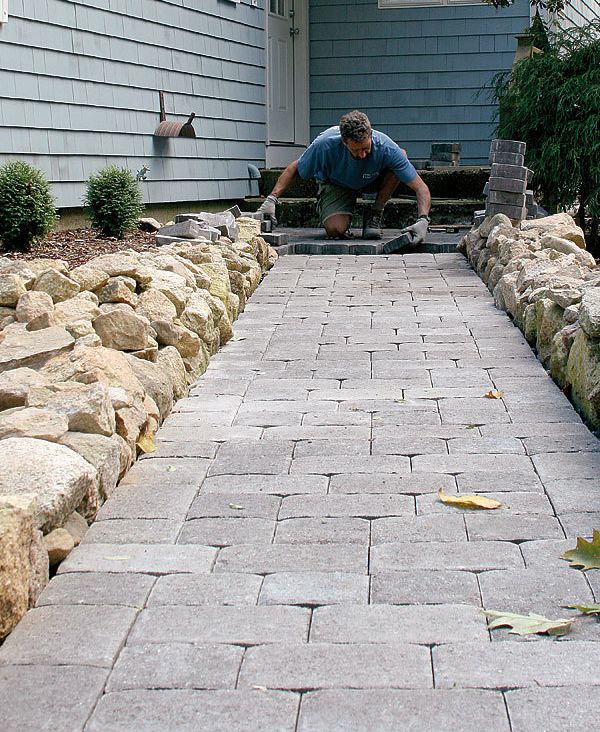Paver Walkways: A Guide to Enhance Your Outdoor Space
Introduction
Paver walkways are a versatile and durable addition to any outdoor space, providing both aesthetic appeal and functionality. This comprehensive guide will delve into the various aspects of paver walkways, from design considerations to installation techniques.
Design Considerations
1. Material Selection:
- Concrete pavers: Durable, affordable, and available in various shapes and colors.
- Clay pavers: Natural, earthy tones, and slightly more expensive than concrete.
- Stone pavers: Premium option, offering a timeless and elegant look.
2. Color and Pattern:
- Consider the overall color scheme of your home and garden.
- Choose patterns that complement the architectural style and create visual interest.
- Experiment with herringbone, basketweave, or circular designs.
3. Size and Shape:
- Paver size can influence the overall appearance and scale of the walkway.
- Rectangular pavers provide a classic look, while square or circular pavers add a touch of whimsy.
4. Layout and Design:
- Plan the layout carefully to ensure a seamless transition between different areas.
- Consider curves and angles to create a dynamic and inviting path.
- Incorporate lighting for safety and ambiance.
Installation Techniques
1. Site Preparation:
- Excavate the area to the desired depth, typically 4-6 inches.
- Compact the soil using a plate compactor to create a stable base.
- Install a layer of gravel or crushed stone for drainage.
2. Base Layer:
- Spread a layer of sand or paver base over the gravel, approximately 1-2 inches thick.
- Level and compact the base layer thoroughly.
3. Paver Placement:
- Start laying the pavers from one edge, ensuring they are level and aligned.
- Use a rubber mallet to gently tap them into place.
- Maintain a consistent joint width using spacers.
4. Edging:
- Install edging around the perimeter of the walkway to prevent pavers from shifting.
- Choose edging materials such as concrete, metal, or plastic.
5. Compaction and Finishing:
- Once the pavers are in place, compact the entire area using a plate compactor.
- Sweep sand or polymeric sand into the joints to fill and stabilize them.
Maintenance and Repair
1. Regular Cleaning:
- Regularly sweep or hose down the walkway to remove dirt and debris.
- Use a mild detergent and water to clean spills or stains.
2. Joint Maintenance:
- Inspect the joints periodically and fill any gaps with sand or polymeric sand.
- Seal the joints to prevent weed growth and moisture penetration.
3. Paver Repair:
- If pavers become loose or damaged, they can be replaced individually.
- Dig out the damaged paver and replace it with a new one, ensuring proper leveling and compaction.
Benefits of Paver Walkways
1. Durability and Longevity:
- Pavers are highly durable and can withstand heavy foot traffic and weather conditions.
- They have a lifespan of 20-50 years with proper maintenance.
2. Aesthetics and Versatility:
- Pavers offer a wide range of colors, shapes, and patterns to complement any outdoor design.
- They can be used to create intricate designs and add a touch of elegance to your landscape.
3. Drainage and Permeability:
- Pavers allow water to drain through their joints, reducing puddles and runoff.
- This makes them an environmentally friendly option for walkways.
4. Easy Maintenance:
- Pavers are relatively easy to clean and maintain.
- Regular sweeping and joint maintenance can keep them looking their best.
Conclusion
Paver walkways are a valuable addition to any outdoor space, combining functionality with aesthetic appeal. By carefully considering design, installation, and maintenance, you can create a durable and beautiful walkway that will enhance your outdoor experience for years to come.
